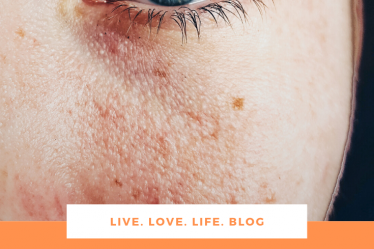Aloe vera plants, particularly Aloe Barbadensis Miller plants, have been used for centuries to help burns, cuts, and other skin ailments. Perhaps your grandparents always had one of these unique, cactus-like plants nearby, just in case of an emergency. If someone got a cut or burn, they would break an aloe leaf apart to extract the gel from inside the leaf. The aloe gel inside the leaf is used as a natural healing salve.
With the onset of commercialism and the recent boom in all-natural products, aloe has become the ingredient of choice in many skincare and health products. Commercial aloe products include everything from creams to lotions to nutritional supplements in pill or drink form. The products often combine aloe gel with other ingredients to enhance the gel’s natural healing components. For example, an aloe-based Hawaiian product, called AhVahleen, combines aloe with some natural extracts taken from organic honey and a Hawaiian Kalo herbal plant.
Natural Aloe-Based Solutions for Skin Care and Health


Aloe gel, especially when combined with other natural ingredients, can greatly enhance the skin and its ability to replenish skin cells. As skin cells die, new skin cells must replace the old to promote healthy skin. This also slows the aging process and helps keep the skin moist and beautiful. Aloe creams and gels on the market can help enhance this process. There are also creams and gels to help with itching, burns, cuts, psoriasis, shingles, and other skin conditions.
Aloe vera gel is also known to have antiviral, antibacterial, and antifungal properties, which allow skin ailments to heal while reducing the risk of infection. Some aloe-based products are said to help soothe and dry up chickenpox as well. Aloe gel can work as a natural anesthesia to reduce or alleviate pain caused by burns, cuts, and skin rashes. For severe sunburn and/or sun poison, aloe vera gel can cool the burning skin and speed up the healing process.
Use Aloe Vera with caution
Aloe vera can also be used internally, but the scientific studies regarding its effects on the human body are still limited and internal Aloe vera treatments should therefore always be embarked on with caution. Discussing the treatment with a licensed medical professional is recommended. Internal Aloe vera treatment is popular among patients suffering from heartburn, ulcers, diverticular disorders, and other digestive problems. It is suspected that the antibacterial property of the Aloe vera is the cause of the relief reported by many patients.
You should also be aware that aloe vera, although it is a traditional remedy, can have side effects. Reported side effects include liver dysfunction, burning sensations, allergic reactions, nausea, strangely-colored urine, and dermatitis, although all of them are rare. Some studies have shown that, while the aloe vera does relieve pain, wounds treated with aloe vera can take longer to heal than usual, making it an undesirable treatment in many situations.
There are also many conditions you can have which means that you shouldn’t take aloe vera. If you’re pregnant or breastfeeding, allergic to garlic or onions, or have kidney or heart disease, you should avoid aloe vera. It should never be given to children or animals, as it can be poisonous to them.
Never use Aloe vera internally if you are currently using oral corticosteroids since Aloe vera will interact with this medication. Beclomethasone, Prednisone, and Methylprednisolone are three common examples of oral corticosteroids. The combination can cause potassium deficiency and poisoning.
How to Buy Natural Aloe Vera Products
In commercially available Aloe vera remedies, it is usually Aloe vera juice that forms the active ingredient. If you by low-quality Aloe vera remedies, they might not have been made from pure Aloe vera juice. If other parts of the plant enter the remedy, the treatment can act as a strong laxative. This effect is caused by the so-called Aloe vera latex that is located in special cells, the so-called pericyclic tubules, which are found along the inner skin of the Aloe vera leaf. Proper processing methods are necessary to ensure that no latex enters the Aloe vera juice. If you experience unwanted laxative effects or cramps when using medications containing Aloe vera, you should refrain from using it and try to find a better manufacturer that can provide you with high-quality Aloe vera products.
Besides growing your own aloe vera plants, the next best thing is to buy natural aloe-based products. But before buying, be sure the products are all-natural with few or no added ingredients that could decrease the aloe’s beneficial properties. Read the ingredients on each product and learn why the ingredients were added. These products often provide more benefits than even the actual aloe plant alone.
Shop online to find aloe-based products that are unique to your skincare and health needs. If you have psoriasis, for instance, look for creams, gels, or lotions to soothe this condition in particular. If you work in the sun or are outdoors a great deal, look for aloe products that can protect your skin from the sun’s harmful rays. If you have multiple needs for aloe, find a natural aloe product that offers many benefits in one. Start enjoying natural skincare and health today with the wonderful natural solution of aloe vera!




[…] Aloe Vera and It’s Natural Skin Care and Health Benefits […]